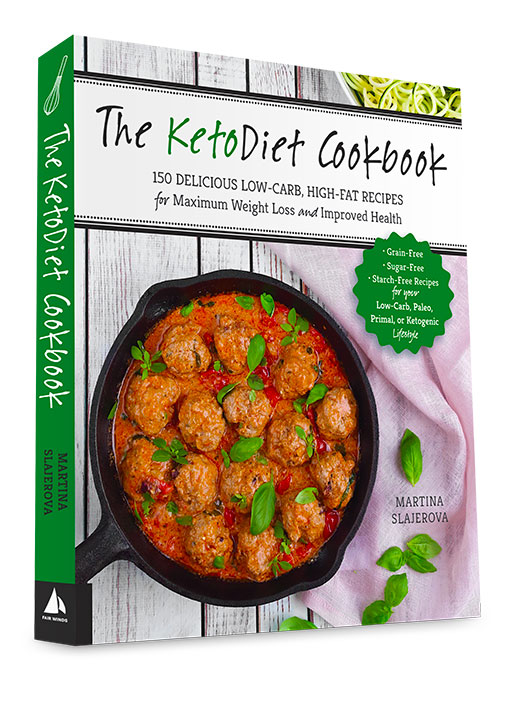Do you ever feel guilty when eating fast food because of the unhealthy ingredients and high carb content? Many people avoid fast food because of the unhealthy reputation surrounding it. But could it be possible to find a low-carb solution? Today, we explore the possibilities of a balanced meal by allowing ourselves a treat of low-carb fast food.
1. A Welcome Change: Low-Carb Fast Food for Health-Conscious Eaters
Low-carb fast food has been a blessing for health-conscious eaters. From low-carb burgers to lettuce wraps, a meal that doesn’t spike your blood sugar is no longer a struggle to find. There are plenty of exciting and delicious new options out there for those of us on restricted diets.
Low-carb fast food is a great way to satisfy your craving for something greasy without sacrificing nutrition. Protein-packed burgers with lettuce cups instead of bun, grilled chicken sandwiches, and zucchini noodle bowls all provide flavorful options that will keep you full without adding too many carbs to your diet.
Not to mention the fact that these low-carb meal substitutes often contain fewer calories and more vitamins and minerals than conventional burgers, sandwiches, and burritos. And if you want to be really adventurous, you can try substituting some vegetables for carb-laden noodles and rolls in any of your favorite pasta dishes. You’ll get a more nutrient-dense meal and save some carbs at the same time.
- The Benefits of Low-Carb Fast Food:
- Low-calorie and nutrient-dense
- No spiked blood sugar
- More satisfying than traditional options
- Healthy substitutes for traditional carbs (like zucchini noodles, lettuce buns, etc)

2. Tasty Low-Carb Choices for the On-the-Go Lifestyle
Anyone with an on-the-go lifestyle knows just how hard it can be to ensure your meals stay low-carb. That doesn’t mean you have to give up on delicious meals – here are some editing alternatives that will keep you satisfied and on-track.
Create Your Own Meals: When time is of the essence, the best thing to do is to prepare some meals at home in advance. This way you can ensure all meals stick to the principles of low-carb eating while still tasting great. Here are some ideas:
- Grilled chicken with vegetables
- Egg muffins with cheese and vegetables
- Slow cooker pulled pork with lettuce wraps
- Hard-boiled eggs with a small salad
Some pre-made meals work just as well – look for lean proteins like grilled chicken, fish, or turkey slices, and combine with plant-based carbs such as steamed vegetables, legumes, avocados, and more. Just pop these meals in the microwave for a few minutes for an easy and filling low-carb dinner.
Stock Up On Handy Snacks: When hunger strikes, it helps to have healthy snacks on hand that you can reach for in a pinch. Stock up on nuts, seeds, hard-boiled eggs, fresh vegetables and hummus, smoked salmon, and cheese slices. All of these snacks are quick and easy, and they’ll provide you with the nutrition and energy you need to stay satisfied until your next meal.

3. The Pros and Cons of Choosing Low-Carb Fast Food
Eating low-carb fast food doesn’t have to mean compromising on flavor or nutrition. With careful consideration, you can actually make healthier choices for your meals and still enjoy a quick bite. But like anything else, there are pros and cons to consider.
PROS:
- Lower calorie intake
- Often less sugar and saturated fat
- A greater number of health-friendly ingredients
A diet of low-carb fast food can be beneficial for those watching their waistlines, as the majority of these meals are low in calories and packed full of nutrition. You can find some healthier options on the menu, such as salads or chicken dishes, often boasting fewer saturated fats and sugars than other fast-food dishes.
CONS:
- High cost
- Fewer leftovers
- Limited menu choices
Low-carb fast food is often more expensive than its fried and sugary counterpart, meaning that you may have to budget more carefully. Eating low-carb also usually results in fewer leftovers, so you might not have as many lunchable options the following day. Ultimately, the low-carb fast-food menu has fewer options to choose from, so if you want a wide selection you might not be able to find it.
4. Composition Matters: Finding the Right Low-Carb Meal
When it comes to the success of a low-carb diet, composition matters. Knowing how to construct the perfect meal, without overdoing it on the carbohydrates, can be tricky. Thankfully, there are four key components to consider when creating dietary perfection: protein, vegetables, fat, and fibre.
Protein: The foundation of any healthy meal, protein will provide you with essential amino acids to build and repair muscle. Examples include eggs, chicken breasts, fish, beef, turkey, pork, and tofu. To ensure optimal nutrition, vary your sources and aim for 20-35 grams of protein for each main meal.
- Eggs
- Chicken breasts
- Fish
- Beef
- Turkey
- Pork
- Tofu
Vegetables: Adding a serving of colourful, nutrient-dense vegetables to your meals will offer a wealth of health benefits. Broccoli, Swiss chard, peppers, onions, and kale are just a few nutrient-rich veggie options. Incorporate these during meal prepping to ensure that you’re getting your daily dose of vitamins and minerals.
- Broccoli
- Swiss chard
- Peppers
- Onions
- Kale
Fat: A crucial part of any meal, healthy fats pack a great deal of punch. Avocado, olive oil, nuts, and seeds are all excellent sources of good fat. They offer energy and help to restore the body, aiding brain development and cell protection. Aim to get around 20-30% of your daily calories from healthy fats.
- Avocado
- Olive oil
- Nuts
- Seeds
Fibre: Fibre is a non-digestible carb that helps to keep you fuller for longer and stabilise blood sugar levels. Incorporating fibre-filled ingredients such as nuts, seeds, and leafy greens into your meals will provide essential fibre, minerals, and vitamins to bolster health. Aim to consume around 25-30 grams of fibre per day.
- Nuts
- Seeds
- Leafy greens
5. Replacing Carbs with Healthy Alternatives
Carbohydrates are a necessary part of a healthy diet, but too much can be unhealthy. Fortunately, there are plenty of healthy alternatives that you can use to reduce your carbohydrate intake without sacrificing flavor. Here are five options that you’ll love:
- Quinoa – packed with protein, quinoa has quickly become one of the most popular healthy alternatives to white rice or white potatoes. It has a nutty flavor and can be used in a variety of dishes.
- Green Vegetables – a great way to get your daily dose of vitamins and minerals. Spinach, broccoli, asparagus, and Brussels sprouts are excellent sources of nutrition and contain few carbohydrates.
- Beans – a good source of protein and fiber, beans are a great way to add nutrition to your meals without packing on carbs. Black beans, kidney beans, and chickpeas are all tasty alternatives to white rice or mashed potatoes.
- Nuts – a great source of healthy fats, nuts are a nutritious alternative to refined carbs. Almonds, walnuts, and peanuts are all excellent choices.
- Fruits – Fruit is not only delicious, it’s incredibly nutrient-dense and contains few carbohydrates. Apples, oranges, strawberries, and bananas are all great options.
Replacing just a few of your daily meals with nutritious alternatives like quinoa, green vegetables, beans, nuts and fruit can make a huge difference to your waistline. Plus, they add variety and flavor to the food you’re used to eating. Give these healthy carb alternatives a try and you’ll be surprised how much healthier you feel.
6. Making Low-Carb Fast Food Part of Your Balanced Diet
For the health-minded vegan looking for a quick bite, fast food can seem like a dietary nightmare. But there are actually a number of ways to enjoy processed food without sacrificing nutrition or flavor.
When done right, vegan fast food can make up a balanced diet. Here are some tips for ordering low-carb fast food:
- Swap the bun. Burgers, hot dogs and sandwiches don’t have to mean carbs. Ask for your item without the bun for an instant carb cut.
- Opt for the greens. Many fast food joints are introducing salads or wraps with tasty vegan toppings. Ask for light dressings to keep it low-carb.
- Go light (or none) on the sauces. Sauces are often loaded with sugar and carbs. Ask for sauces on the side, or skip them all together.
Next time your sweet tooth beckons you to the drive-through, try one of these low-carb vegan options. It’s possible to enjoy fast food that protects your waistline, your wallet, and your animal friends.
Low-carb fast food is an increasingly popular way to enjoy a balanced meal without relying on unhealthy fats and too much sugar. Fast food restaurants now offer more low-carb menu options than ever before, making it an great option for anyone looking for a quick and nutritious meal. So next time you’re in a hurry, just remember that low-carb fast food can be the perfect way to enjoy a balanced, flavorful meal!
